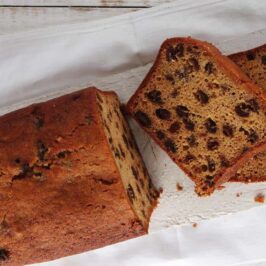How a single pip planted in 1809 grew into the nation’s favourite cooking apple.
If you’ve ever tucked into a golden apple crumble, there’s a good chance you’ve already tasted a little piece of British history. The humble Bramley apple, known for its sharp flavour and fluffy texture, began life not in an orchard but in an ordinary back garden in Southwell, Nottinghamshire.
More than 200 years ago, a young girl named Mary Ann Brailsford planted an apple seed, perhaps on a whim, perhaps out of curiosity. That small act of gardening sparked a legacy that would shape the way Britain bakes forever.
The Birth of a British Icon
The pip that Mary Ann planted in 1809 took root in the fertile Nottinghamshire soil and grew into a magnificent tree. As the years passed, it produced large, distinctive green apples with an unmistakable sharp, acidic flavour that would prove perfect for cooking. The fruit possessed a remarkable quality! When baked or stewed, it transformed from firm flesh into fluffy, tender perfection whilst maintaining its shape beautifully.
When Mary Ann married and became Mrs Brailsford, her apple tree continued to thrive.
How Did the Bramley Apple Get Its Name?
When Mary Ann’s garden eventually passed into the hands of Matthew Bramley, a local butcher, in the 1840s, her tree was already producing extraordinary fruit. Local nurseries began to take cuttings from it, with Matthew’s permission – on one condition: the new variety had to carry his name
Though he wasn’t responsible for planting the original tree, his name would forever be linked with the exceptional apples that graced his garden. By the 1850s, local nurseries had begun propagating the variety, officially christening it “Bramley’s Seedling” in honour of the tree’s owner.
Today, every single Bramley apple in the world can trace its roots back to that original Southwell tree.
When Are Bramley Apples in Season?
Bramleys are harvested from late August through March, making them the perfect companion for autumn puddings and winter feasts. They store exceptionally well, often keeping for months when properly chilled, which is why they’ve been a staple in British kitchens long before fridges existed.
Time for crumbles, pies, and steaming apple sauces served alongside roast pork.
What makes Bramley apples so special lies in their unique characteristics. These magnificent specimens are notably larger than most dessert apples, with their distinctive green skin sometimes flushed with red stripes. Their high acidity content – significantly higher than eating apples – gives them that characteristic sharp taste when eaten raw. This might seem off-putting to those expecting sweetness, but it’s precisely this tartness that makes Bramleys the ultimate cooking apple.
Heat them up and Bramley apples undergo a magical transformation. The high pectin content means they break down beautifully, creating that perfect fluffy texture in apple pies and crumbles. The natural acidity balances sweetness in baked goods whilst preventing the fruit from browning too quickly during preparation. No wonder British bakers have sworn by them for generations, they simply perform better than any other variety in the kitchen.
Seasonal Splendour and Traditional Celebrations
Bramley apples are at their absolute best from late August through to March, making them the perfect autumn and winter ingredient. The season in Britain’s traditional baking calendar, as the weather turns cooler and thoughts turn to warming puddings and hearty desserts. Bramley apples store exceptionally well, often lasting through winter when properly kept, ensuring a steady supply for months of comforting bakes.
The cultural significance of Bramley apples is celebrated throughout the country at numerous festivals and events. The annual Bramley Apple Festival in Southwell honours the variety’s birthplace with tastings, talks, and traditional craft demonstrations.
National Apple Day on 21st October sees orchards across Britain opening their gates to visitors, with Bramley trees often taking centre stage. Celebrating the fruit – and preserving the heritage and knowledge that surrounds Britain’s apple-growing traditions.
How to Cook with Bramley Apples
Bramley apples are famously versatile. Whether you’re a home baker or a professional chef, their balance of tartness and texture makes them a reliable hero ingredient.
Try Bramleys in:
Apple crumble – the classic comfort pudding.
Apple and blackberry pie – a countryside favourite.
Eve’s pudding or apple charlotte – timeless British desserts.
Homemade apple sauce – the perfect savoury pairing with pork.
Because Bramleys break down when cooked, they’re ideal for purées, sauces, and fillings and their size means you’ll need fewer apples per recipe. For more structure (like in a tart), pair Bramleys with firmer eating apples for the best of both worlds.
Bramley apples are unrivalled for both sweet and savoury applications. Their ability to cook down into a fluffy purée makes them ideal for apple sauce to accompany roast pork, while remaining firm when sliced for perfect results in tarte tatin or rustic galettes.
Traditional British puddings like apple charlotte, eve’s pudding, and spotted dick all rely on Bramleys’ unique cooking properties to achieve their characteristic textures.
For the home baker, Bramleys offer remarkable versatility. They need less sugar than other varieties due to their natural tartness, allowing the true apple flavour to shine through. Whether you’re making a classic apple crumble, experimenting with apple and blackberry pie, or preparing sauces, Bramleys provide the perfect foundation. Their generous size means fewer apples are needed for most recipes, making preparation quicker and more economical.
Top Bramley Facts and Trivia
The original Bramley tree in Southwell is now over 200 years old and remarkably still produces fruit today. Though weakened by storms over the years and requiring support, it continues to bear apples, making it one of Britain’s oldest living fruit trees. Every single Bramley apple grown anywhere in the world can trace its genetic lineage back to Mary Ann Brailsford’s original pip. This makes the Bramley one of the most successful single-variety apples in history.
Bramleys hold the distinction of being Britain’s most popular cooking apple, accounting for over 95% of the cooking apples grown commercially in the UK. They’re so integral to British baking that many traditional recipes simply call for “cooking apples” with the assumption that Bramleys will be used. The variety has even earned protected designation status, with true Bramley apples only able to be grown from grafts of the original tree.
Can You Grow a Bramley Apple Tree at Home?
Yes, though patience is key! Bramley trees typically take 4–5 years before producing fruit, but once mature, a single tree can yield 150–200kg of apples each year.
For those inspired to grow their own Bramley tree, patience is essential – these trees typically take 4-5 years to produce their first fruit. However, the wait is worthwhile, as mature trees can yield 150-200kg of apples annually for decades.
Bramleys prefer well-drained, fertile soil and a sunny to partially shaded position. They’re relatively hardy but benefit from protection from strong winds.
The trees are naturally vigorous growers and can reach impressive sizes if left unpruned. Regular pruning in winter helps maintain shape and encourages better fruiting. Bramleys require cross-pollination from another apple variety to produce fruit, so consider your garden’s existing trees or nearby orchards when planning your planting.
Where to Find and Buy Bramleys
During peak season, Bramley apples are widely available in supermarkets, farmers’ markets, and farm shops across Britain. Look for firm, unblemished fruit with taut skin and avoid any that feel soft or show dark spots. Many pick-your-own orchards also offer Bramley harvesting experiences, allowing visitors to select their own fruit whilst enjoying the countryside.
For the finest examples, seek out traditional orchards and specialist fruit growers who often cultivate heritage varieties with particular care. Some producers offer online ordering, delivering fresh Bramleys directly to your door. Local farmers’ markets are excellent sources, often providing apples picked within days and offering the opportunity to speak directly with growers about their cultivation methods.
The Enduring Appeal of Britain’s Favourite Cooking Apple
From Mary Ann Brailsford’s simple garden decision in 1809 to today’s commercial orchards, the Bramley apple represents the very best of British agricultural heritage. This local fruit has shaped our baking traditions, influenced our seasonal eating patterns, and created countless cherished family recipes passed down through generations. The fact that every Bramley apple connects us directly to that original tree in Southwell makes each bite a taste of living history.
A reminder that sometimes the smallest decisions can have the most extraordinary consequences. Mary Ann Brailsford’s pip may have been tiny, but her legacy continues to flourish in kitchens and gardens across the nation.







